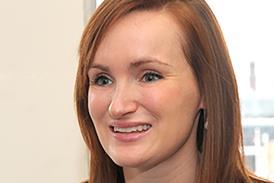by Amber Melville-Brown, David Price Solicitors and Advocates, London
No invisible cape for JK Rowling's son
Murray v Express Newspapers Plc & Another [2007] 1909 (Ch)
JK Rowling is a private woman. Given her role as celebrated author of the hugely popular Harry Potter series of children's books, she has to accept that some publicity will go with the rewards that she reaps. But JK Rowling is also a litigious woman. And she is not afraid to seek the assistance of the courts when the media attention that she is prepared to accept crosses the line into the lives of her children.
This summer, however, her attempts to protect her children suffered a blow when Mr Justice Patten threw out her claim for breach of confidence, privacy and infringement of the Data Protection Act over the unauthorised publication of a photograph of her two-year-old toddler David. Unlike Harry Potter - as far as we know - her son does not possess special powers or an invisible cape to hide him from the glare of the media.
This became apparent when Express Newspapers published a photograph of him with his mother and father on a street in Edinburgh. Neither mum nor dad saw the long-lens of a camera pointed at them; young David would not have known what it was if he had. But mum certainly knew what to do when she saw her baby's face staring at her from the pages of the Daily Express and, under her married name and as litigation friend for her son, she took action.
The claim against the newspaper settled, but not so that against the photo agency Big Pictures Limited. They had not harassed the boy in taking the photo, they argued, while the snap did not show any special circumstances or anything embarrassing and it was taken in public. As summarised in the judgement of Mr Justice Patten, the company's position was that 'the English courts have refused to recognise the right to an individual not to be photographed in a public place'. Rather than settle, Big Pictures applied to the court to strike out the claim. And they struck gold.
Testing times
JK Rowling's claim was never going to be an easy one. Indeed, the judge summarised that it was seen by her as 'something of a test case' designed to create a right for celebrities to keep their private lives private, even where their activities were conducted in public. Riding on the heels of two apparently conflicting cases, Campbell and Caroline, the result could indeed not only clarify the position of UK law, but might indeed be a test case, moving the UK law forward a step or two.
But let's take a step back to the significant decision in the domestic courts of catwalk Queen Naomi Campbell against MGN. On a 3:2 majority in the House of Lords, it was eventually decided in her favour that photographs of her outside Narcotics Anonymous (and details of the therapy that she was getting inside) infringed her privacy. But if the photograph was taken outside, in public, how could it be private? It concerned her quasi-medical treatment. The court was concerned that publication of photographs of this nature could damage her ability and willingness, and the ability and willingness of those in a similar position, to seek assistance for their addiction in the future. Had the photograph merely been of the model popping to the shops, with no additional special features, it would not have received the same protection.
Now for a step forward into the realms of European law. Since the incorporation into UK law of the European Convention on Human Rights, the courts have also to take into account any Strasbourg jurisprudence. Here we have to look at a decision relating to real royalty, Princess Caroline of Monaco. Her claim to privacy was upheld by the European Court of Human Rights (ECtHR), despite the fact that the photographs of which she complained were hardly of the same nature as Naomi's. The only therapy from which she might have been dissuaded was of a retail variety - the photographs show her shopping and skiing. But they were considered by the court to be private because they concerned her private life and had nothing to do with any public function.
If this is the case, where did it leave JK Rowling junior? He was not receiving any sort of medical attention, merely the attention of his loving parents. No flashlights were going off in his face, causing him distress. He could have been seen by anyone who peered into his buggy or simply passed him on the street. So presumably he had no reasonable expectation of privacy. But on the other hand, he is not a public figure or a celebrity in his own right, and at his tender age he could hardly be fulfiling anything other than an entirely private role. In that case, there was no reason to allow the photograph to be published without consent.
Expectation of privacy?
Mr Justice Patten was sympathetic to the desire for a parent in the public eye to try to bring their children up in as normal and private a way as possible. But he could not see that this required him to create 'a press-free zone for children [of celebrities] in respect of absolutely everything they chose to do'. Analysing both the Campbell and Caroline (known as Von Hannover) cases, he explained: 'On my understanding of the law, including Von Hannover, there remains an area of innocuous conduct in a public place which does not raise a reasonable expectation of privacy... Even if the ECtHR in Von Hannover has extended the scope of protection into areas which conflict with the principles and decision in Campbell, I am bound to follow Campbell in preference.'
The judge also referred to a decision of the New Zealand Court of Appeal, which he considered to be 'materially indistinguishable' from the present case. The 2004 case of Hosking v Runting concerned a complaint by an Auckland TV presenter over the publication of photographs of his 18-month-old twins in a pram on a public street. According to the court, they did not 'disclose anything more than could have been observed by any member of the public on that particular day'. The photograph of baby David was no different, taken according to Mr Justice Patten on 'the most innocent and ordinary of occasions'.
But the judge has left the door open for further debate. In his opinion, there was a distinction to be drawn between 'family activity' and 'something as simple as a walk down a street or a visit to the grocers to buy the milk'. This distinction may look too fine for some eyes, and one wonders if it will prove too fine for the eyes of the Court of Appeal, which has been asked to reconsider the matter.
In today's society, where photojournalism is widely accepted and does not seem to be diminishing in popularity, how can we expect a snapper to distinguish between a shopping trip to the grocers and a family activity? There are bound to be very blurry lines with such distinctions causing confusion for the photographer, the editor and the lawyer.
The central issue in the claimant's case was whether 'someone who is well known or a public figure is entitled to a measure of protection in respect of their ordinary family life, even when conducted in a public place', said the judge. 'If such a right is established, then it must in my opinion extend not only to the adult individual but also to the infant and dependent members of his or her family and be enforceable equally by each of them.' In other words, the
child is part of the private life of the parent.
Does that mean that the parent is also part of the private life of the child? Gone are the days when a lady would hide her face and her modesty behind an ostrich feather fan. But should Justice Patten's decision be overturned, will we see celebrities such as Paris Hilton swapping their fluffy pooches for the equally cute accessory of a baby in the hope and expectation that if they hold them close enough, they will serve as some magic guard to protect their own privacy? We will have to wait for the sequel to find out.
Charity Explorer provides a reputable reference tool for solicitors, will-writers and their clients who want to leave a legacy or charitable gift.
Visit Charity Explorer
Whether you are looking for legal expert witnesses, legal training/CPD providers, international law firms, administration of estates, legal software suppliers, barristers chambers or any other general legal service, the Legal Services Directory will provide a suitable option.
Visit Legal Services Directory
























No comments yet